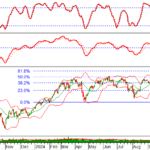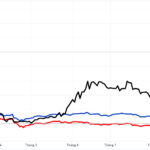The Vietnamese economy is set to shift gears by 2025
On the afternoon of 08/10/2024, at the 2024 Investor Conference press meeting, Mr. Don Lam – CEO and Co-founder of VinaCapital Group shared: “The world has witnessed many changes in the past year. Geopolitical tensions have increased and the short-term global economic outlook remains unstable. However, Vietnam’s resilience, optimism, determination to move forward, and sustainable development continue to offer attractive opportunities for international investors.”
 Mr. Don Lam – CEO and Co-founder of VinaCapital Group
|
Mr. Alex Hambly – CEO of VinaCapital Investment Council shared that Vietnam’s strong economic growth is expected to continue, with a forecast of 6.5% in 2024 and 6.5% in 2025.
Looking ahead, there are expected to be changes. While exports are slowing down, retail and construction are expected to grow. Consumption, which accounts for 60% of GDP, is forecast to continue growing.
What drives consumption growth? The real estate market has significant growth potential, with high demand and low supply. Importantly, the government’s policy changes and management are aimed at restoring the real estate market. This stability in the real estate sector will contribute to consumption growth.
The recent move by the US Federal Reserve (Fed) to cut interest rates has had a positive impact on the real estate and stock markets.
In the long run, Vietnam’s three main growth drivers are closely linked: industrialization supported by FDI, a rapidly expanding middle class (income growth, urbanization, and demographics), and the wave of production shifting to friendly countries.
 Mr. Alex Hambly – CEO of VinaCapital Investment Council
|
Ms. Nguyen Hoai Thu – Executive Director of VinaCapital’s Securities Investment Fund believes that in 2025, there will be many positive macroeconomic prospects. GDP is projected to grow by 6.5% in both 2024 and 2025, with public investment and domestic consumption expected to rebound. The Fed’s rate cut provides room for the SBV to effectively manage inflation and exchange rates.
The monetary policy is currently accommodative, with the average 12-month savings rate at 5%. It is anticipated that the Fed will cut rates twice more this year, providing room for the State Bank of Vietnam (SBV) to follow suit.
Additionally, foreign tourist arrivals in Vietnam are expected to exceed 18 million, surpassing pre-COVID-19 levels.
The Law on Credit Institutions (amended) enhances the transparency of the system and is better aligned with the Law on Real Estate Business and the Land Law.
An important development for the stock market is the removal of the 100% margin requirement by the Securities Commission, and the move towards establishing a Central Counterparty (CCP) system. These improvements enhance market access for foreign investors and promote the stock market’s upgrade.
The Law on Public Investment, which is currently under submission, will streamline legal processes for infrastructure development, expand the infrastructure network, and contribute to economic growth in the coming years.
What will drive the VN-Index growth in the next phase?

Ms. Nguyen Hoai Thu – Executive Director of VinaCapital’s Securities Investment Fund
|
According to Ms. Thu, the fundamentals of the economy support the upward trajectory of the stock market. Currently, economic growth is strong, with the government forecasting a 7% increase for this year, while VinaCapital predicts a 6.5% growth.
Additionally, the Vietnamese stock market is expected to be upgraded to emerging market status, with the change taking effect in 2026.
With these positive factors, foreign investors are likely to return in the next 12 months. Economic growth will drive stock market growth, and if the market is fueled by strong corporate profit growth, the stock market will certainly rise.
The money will flow back
Foreign investors’ net selling in the past was related to the Fed’s high-interest rate maintenance. Therefore, it was inevitable that foreign investors withdrew from emerging and frontier markets, and this occurred on a large scale.
In the past 6-12 months, technology stocks have typically attracted money, concentrating in the US, Taiwan, South Korea, etc. As a result, Vietnam experienced net outflows, or money flowed back to markets with technology stocks.
However, October has seen a turnaround, and VincaCapital has further grounds to believe that money will flow back. Foreign investors will return due to the profit outlook and the anticipation of the Vietnamese stock market’s upgrade.
However, the stock market still presents considerable risks, and Ms. Thu advises investors to exercise caution.
Globally, US economic growth is slowing. China’s surplus goods could lead to cheap exports worldwide. Escalating geopolitical risks are a concern for investors and may impact sea freight transportation.
Domestically, domestic consumption demand may not meet expectations. While a forecast of 8% growth is predicted for next year, the first half of this year was not promising, despite economic recovery. Additionally, the real estate market is expected to recover in 2025 but remains uncertain.
Higher inflation may exert pressure on the SBV’s monetary policy. Delays in the FTSE’s market classification could negatively affect investor sentiment.
Unveiling the Top-Performing Real Estate Stock on HOSE
As most real estate stocks flounder, Saigon Real Estate Joint Stock Company’s (Saigonres) stock code, SGR, has soared to record highs thanks to bold leadership moves.



















